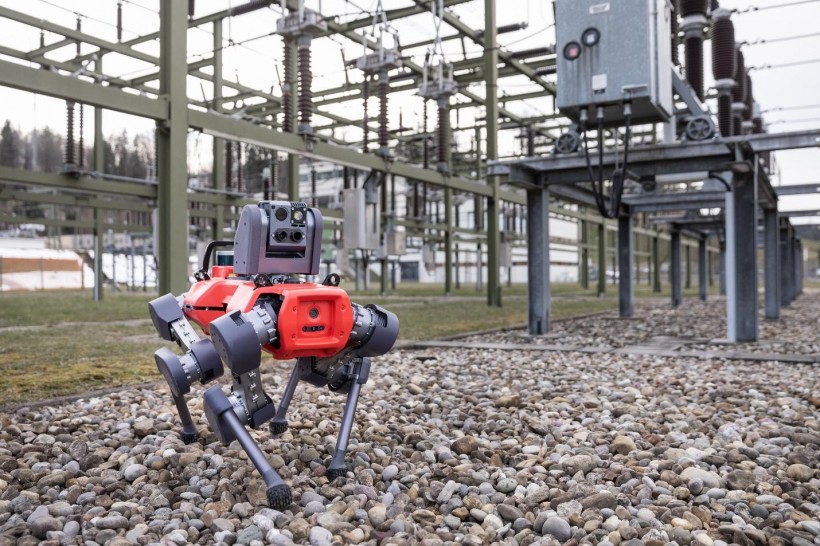The Future of Automation in Industrial Processes – ANYbotics

The origin of robots can be traced back to the early twentieth century when people started using computers for automating numerous tasks. Humans gained the engineering expertise to harness and manage electricity during the industrial revolution, allowing machines to be driven by small motors. The concept of machines that complete tasks autonomously emerged in the early twentieth century. Robots were initially used in factories to complete the most repetitive tasks functioning as industrial robots. These industrial robots were stationary devices capable of manufacturing tasks, enabling minimum involvement of human labor in production. Since the 2000s, digitally programmable industrial robots with artificial intelligence have been developed for automating manufacturing processes.
Legged robots are mobile robots that use movable legs for commuting and roaming rather than wheels and are more adaptable than wheeled robots. Such robots can traverse and maneuver various territories due to their flexibility. Legged robots are built for versatile terrains. They need the management of leg actuators to maintain balance, sensors to establish foot placement, and planning algorithms to decide movement direction and speed. Advanced robots utilize cameras and laser sensors to perceive their environment, develop maps, and localize according to the terrain. The robot can utilize the information to autonomously plan and develop a navigation path using artificial intelligence while selecting footholds while moving around. The robot's center of gravity must be supported statically to sustain its movement in various locations and terrains.
Industrial robots offer advantages and benefits over traditional robots, including efficiency, better automation, data reliability, and getting workers or other people out of hazardous areas. Only a handful of companies design industrial inspection robots to save money, time, materials, and space while enhancing output and product quality. One such company is ANYbotics. The company's robotic system combines all necessary sensors and intelligence in a compact machine for fulfilling clients' diverse needs. It is a lightweight device to meet advanced motion and force control requirements and moves and operates autonomously in rugged terrain. It interacts safely with the environment, allowing industries to gain assistance for searching and completing tasks efficiently.
ANYbotics is a Swiss robotics company producing quadrupedal robots for industrial applications since 2016. The firm is well known for its end-to-end robotic systems for industrial inspection. Their legged robots are meant to travel around industrial environments, check the state of equipment and infrastructure, and provide high-quality reports to industrial operators. The company's clients are prominent manufacturers, industrial processing units, energy firms, and construction companies.
History of ANYbotics
ANYbotics has been developing legged robots to advance robotics while helping organizations automate the surveying and evaluation processes. Since then, the robot prototypes have grown in maturity, autonomy, and dependability, allowing them to progress from a research project to a fully functioning demonstrator. The team at ANYbotics established autonomous robots for real-world applications while alleviating errors and defects from industrial processes.
ANYbotics was established with the primary goal of commercializing the technology underlying the quadrupedal robot ANYmal. Samuel Bachmann, Remo Diethelm, ETH Zurich, Hanspeter Fässler, Péter Fankhauser, Christian Gehring, Andreas Lauber, Marco Hutter, and Roland Siegwart all contributed to its creation. The company's team worked for the Wyss Zurich initiative and quickly developed it, making its first sale in 2017. As a groundbreaking initiative, the first offshore deployment of ANYmal was accomplished in 2018. ANYbotics introduced its new ANYmal generation C robot in 2019.
In 2021, the firm introduced its robot ANYmal, generation D, with improved motion control for quicker and more varied movement in steep and tight industrial staircases. Its staff expanded to 90 people because of workload and the acceptance of their work worldwide. ANYbotics introduced ANYmal X, the world's first EX-certified inspection system based on legs, in 2022.
The study began at the legged robots unit at ETH Zurich's Autonomous Systems Lab (ASL). The actuation mechanism, balance control, and overall performance of the legged robot were exhibited to the scientific community and refined over several years, initially on the early StarlETH platform and then on ANYmal.
Role of Robots in Industrial Efficiency
Robots can operate in hazardous areas and eliminate risky employment for people. They can monitor industrial environments with varying terrains, perform inspections that are otherwise impossible or challenging for humans, and identify critical risk areas posing hazards for workers. An industrial robot speeds up manufacturing processes 24 hours a day, seven days a week. Breaks and shift changes are needless for robots due to a lack of rest requirements. The speed and dependability of robots eventually reduce cycle time and increase throughput.
ANYmal is a four-legged, rugged robot designed to examine the status of industrial equipment and infrastructure. It is effective in rain, snow, wind, and dusty situations. It has multiple sensors to traverse plants and avoid obstructions safely. ANYMAL X is the world's only industrial EX-certified leg-based robot. It is an autonomous robot built in an explosion-proof environment in the oil, gas, chemical, and petrochemical industries. If appropriately used, robots will boost economic development and productivity while opening up new employment prospects for many individuals worldwide.
Subscribe to Latin Post!
Sign up for our free newsletter for the Latest coverage!
* This is a contributed article and this content does not necessarily represent the views of latinpost.com










